Progressive Dairy’s editorial staff perused the grounds of World Dairy Expo this year in Madison, Wisconsin, in hopes of finding the coolest new technologies and products available to the dairy industry. Read on to discover what Progressive Dairy Editors Walt Cooley, Jenn Coyne, Katie Coyne, Kimmi Devaney, Jenna Hurty-Person, Matti McBride and Audrey Schmitz found during their time at the event.
New cloud-based software platform and industry-leading collaboration
During the show, Nedap launched its new cloud-based analytics software Nedap Now. It uses enhanced processing power and a farm’s data from activity monitors to provide new insights, including more advanced reproductive behavior and performance and connections to third-party software platforms. The company says the cloud-based software will allow farmers to think and act more proactively toward herd management.
The online platform was cool, but the standing-room-only gathering of industry players was even more impressive. Nedap leveraged its position with distribution partners to bring many dairy technology players together – at least for 90 minutes. That’s the first time I’ve seen that happen. Nedap says they are in a unique position in the industry to help technology providers collaborate for the benefit of producers.
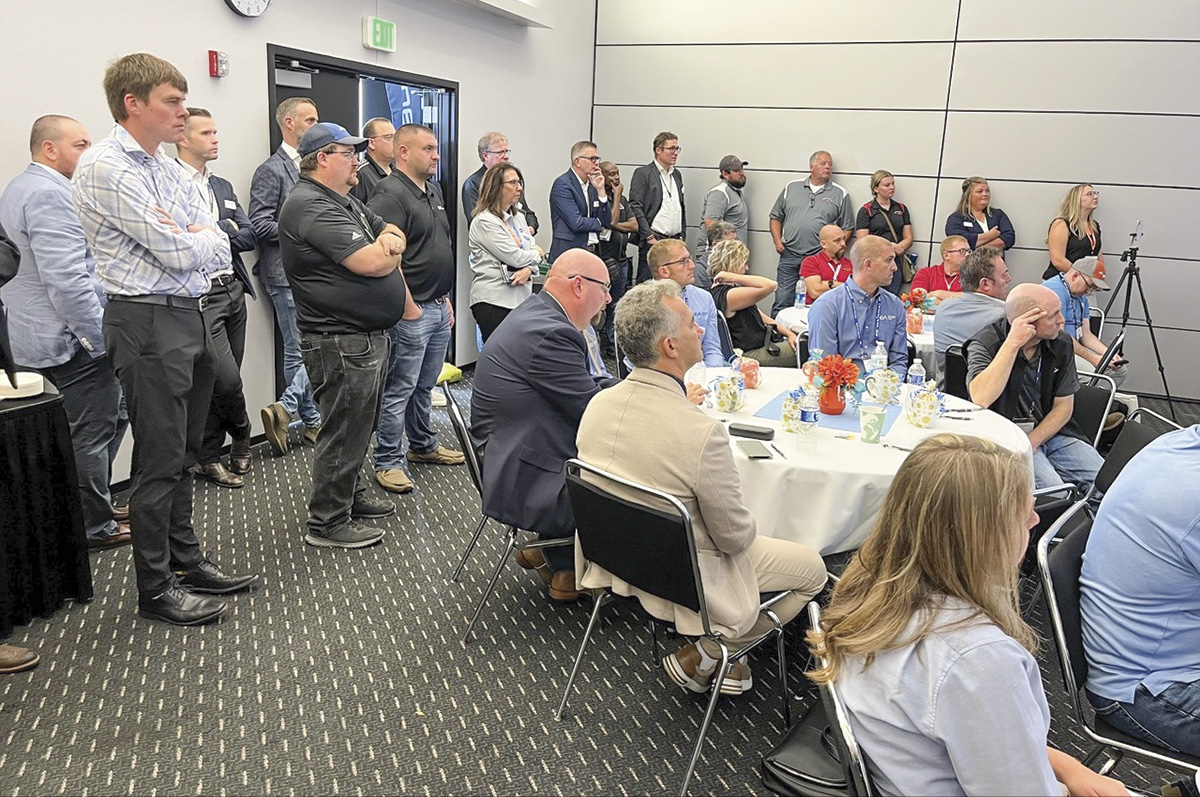
Nedap brought together many dairy technology players for the launch of Nedap Now, which will offer integrations with many third-party software programs. Photo courtesy of Nedap.
New dry cow testing plus feeding program aims to reduce ketosis
A Japanese company known for rumen-protected lysine launched a new service to reduce the risk of metabolic diseases in fresh cows. The program from Ajinomoto focuses on testing and nutrition supplementation on dry and close-up cows. The program starts with a herd-level data analysis to determine cows at risk for metabolic diseases during transition. Cows at high risk are then weekly blood tested for specific amino acid markers and liver enzymes. If significant risk in the herd exists, a recommendation to add rumen-protected lysine to the diet during the close-up period is given. The analysis and testing costs of the program are built into the cost structure for including the company’s lysine in the diet. The company asserts the program can reduce peripartum diseases by 80%.
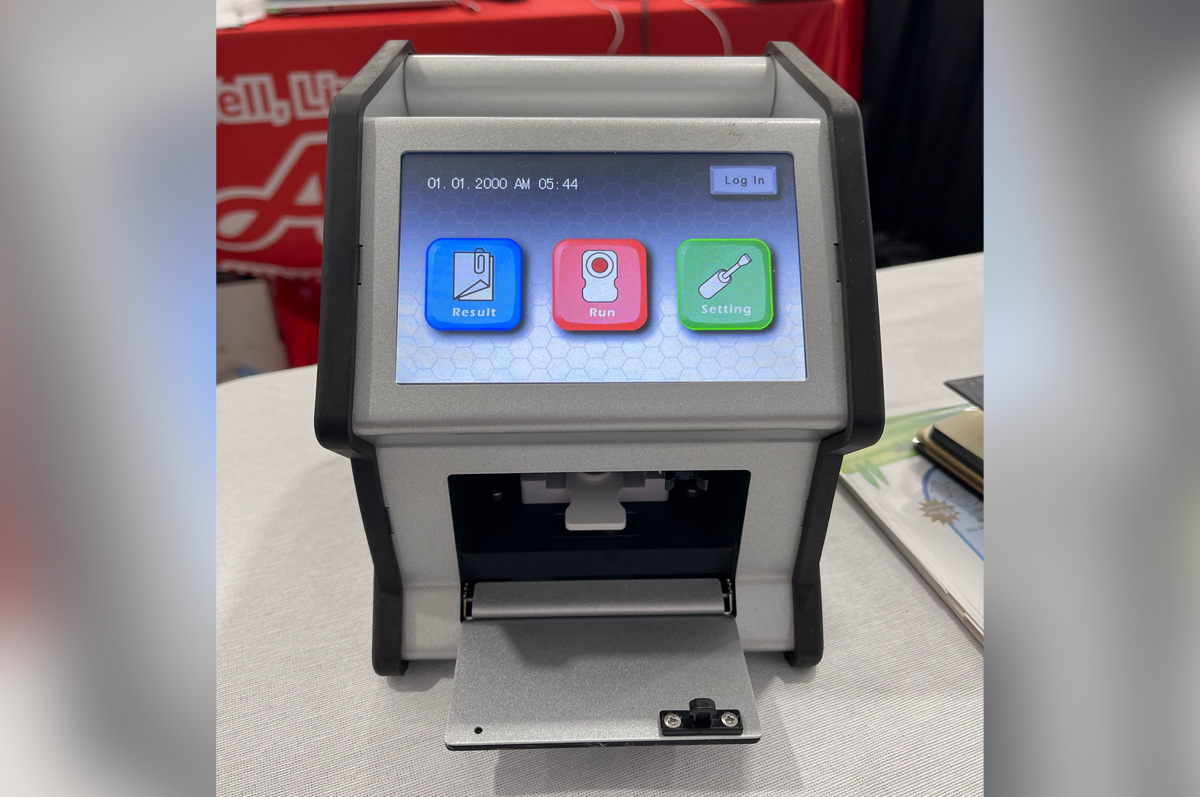
Photo by Audrey Schmitz.
GEA shows off its new free-flow milk meter
Milking equipment giant GEA had its new free-flow milk meter on display at the show. The new meter has a high-capacity inlet and outlet. It can measure milk weights, milk and washwater temperature and milk conductivity. The meter has no moving parts, and the only maintenance required is changing gaskets every few years. The meter works by channeling milk through a groove in the bottom of the meter where probes measure milk production, conductivity and temperature. The company has six dairies – all with rotary parlors – set to get the new milk meters at the beginning of the year. The meter will eventually replace one of GEA’s best-selling milk meters, the Metatron milk meter.
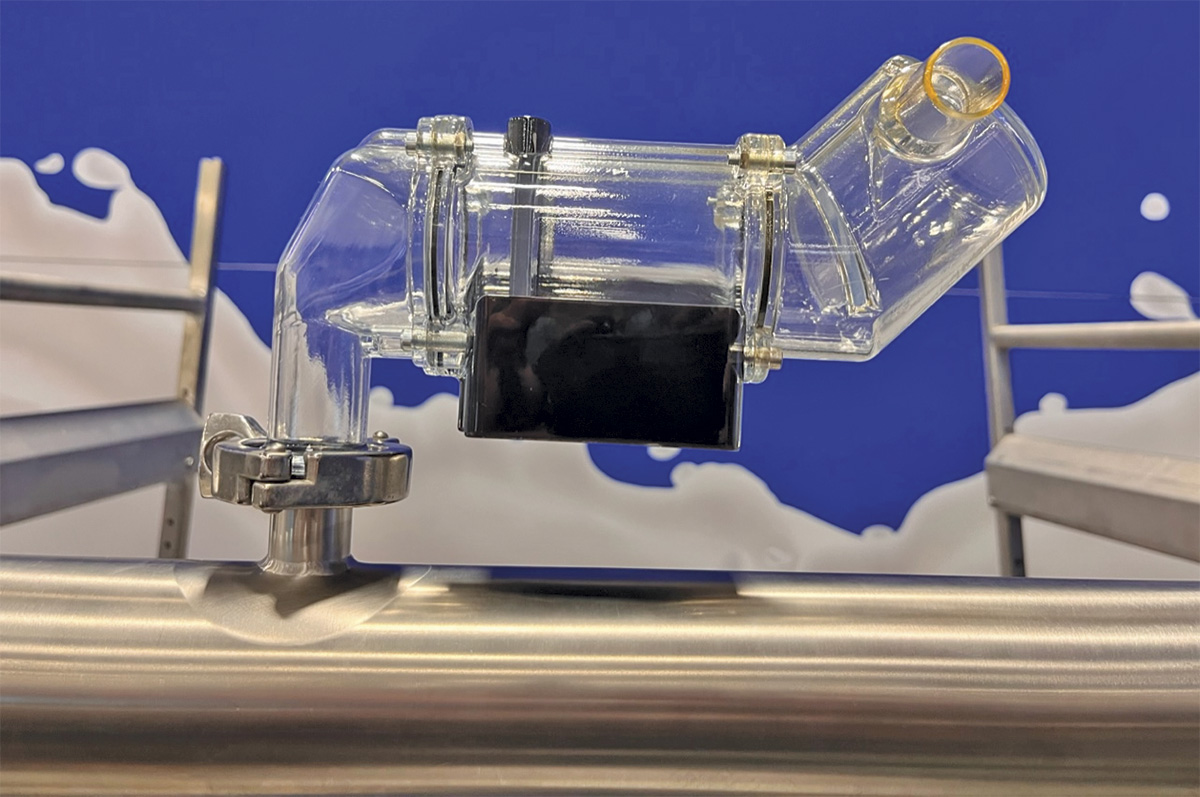
GEA’s new free-flow milk meter can measure milk weights, milk and washwater temperature, and milk conductivity. Photo by Walt Cooley.
—Progressive Dairy Editor Walt Cooley
AI-enhanced digital dermatitis detection tool
University of Wisconsin professor Dorte Dopfer and her research team showcased a new technology that aids in detecting digital dermatitis (DD) in dairy herds.
The concept of the technology includes the use of standard security cameras to stream videos of cows’ heads, locating their ID tags, with another camera system located below to stream videos of the cows’ hooves; both videos are then inputted in the detection models. With this information, the models identify animals with M-stages of DD and the presence of or absence of hoof blocks to be shared in the farm’s hoof-trimming records. Those records are then sorted by the dairy’s hoof trimmer into a treatment list or simply to monitor trends in DD prevalence within the herd. The camera system, which can be placed within the herd’s environment – such as in the milking parlor, footbath area or along sort gates – can be modified to detect other health conditions visible with video monitoring. While a new tool, it was recently deployed on a large commercial dairy farm.

A new technology could aid in digital dermatitis detection. Photo by Karen Lee.
—Progressive Dairy Editor Jenn Coyne
Merck Animal Health Flex V2 eartags
Monitoring technology allows dairy producers to manage their cows on an individual basis regardless of herd size. Flex V2 eartags capture rumination, activity levels, panting and other essential animal behaviors, allowing producers to proactively manage herd health, reproductive efficiency and other management decisions utilizing this data. LED lights on each tag make it easier to locate specific animals that need attention while minimizing disruptions to other healthy cows. Producers can set tags to identify sick animals, cows in heat, cows that need to go dry and more. The monitoring eartags work in conjunction with SenseHub Dairy monitoring program from Merck Animal Health.
Merck Animal Health recently brought their dairy monitoring technology products under the SenseHub Dairy brand, including the former SCR Dairy and Allflex brands

An updated eartag can monitor animal health. Photo courtesy of Merck Animal Health.
—Progressive Dairy Editor Kimmi Devaney
Golden Calf Company streamlines colostrum collection
Colostrum collection and packaging can be a long multistep process. However, Golden Calf Company has eliminated at least one step thanks to their Calf Hero Autofill Station. This setup comes in 5-, 10- and 20-gallon sizes which can handle colostrum directly from a robot, batch pasteurizer or pipeline and automatically measure the colostrum into 2-, 3- and 4-liter portions. In addition, their inline refractometer can automatically test the colostrum for easy quality monitoring.
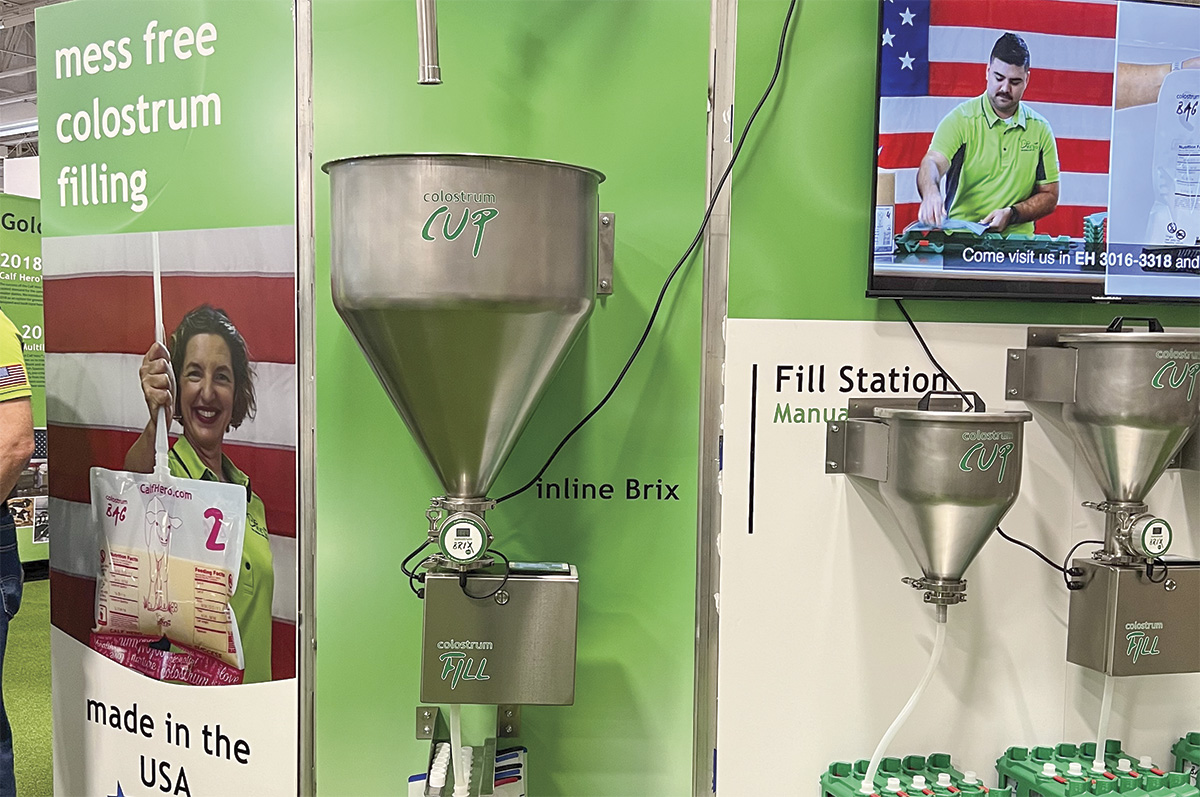
Golden Calf Company is streamlining colostrum collection with their new Calf Hero Autofill Station. Photo by Jenna Hurty-Person.
—Progressive Dairy Editor Jenna Hurty-Person
FarmFit – a lifetime monitoring bolus
STgenetics jumped into the animal monitoring system market with the release of FarmFit, a smart bolus designed to monitor calf and cow health. The magnetic bolus can be inserted in the rumen of a calf as young as 4 weeks old and has a battery life of five years. With Bluetooth connection, boluses can transmit data 24-7. Using a cloud connection, employees and managers can access data via software on a computer or an app on a smartphone. Features of the system include: inventory tracking, real-time physical exam and treatment protocol enrollment, weight recording and growth tracking, treatment dosage auto calculation and withhold, internal body temperature monitoring, external temperature and humidity, predictive algorithms that convert data into actionable alerts.
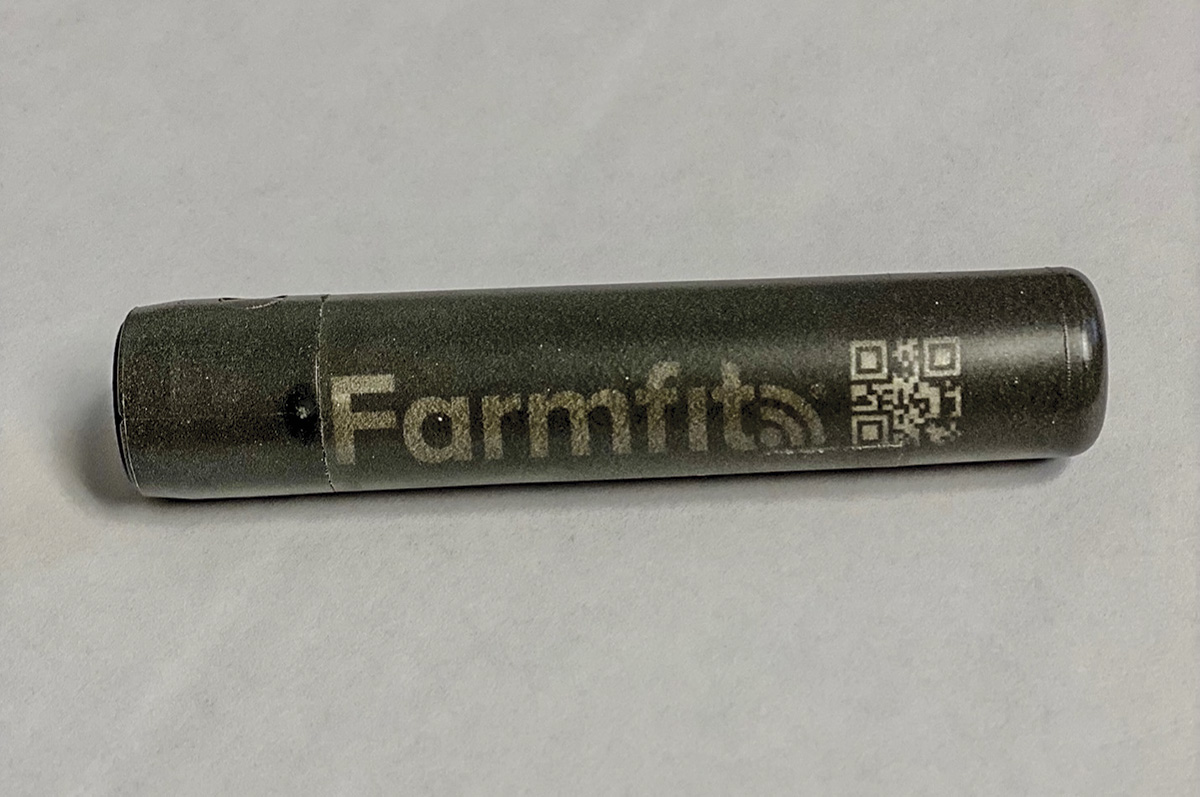
A smart bolus that can monitor both calf and cow health was released during World Dairy Expo this year. Photo by Matti McBride.
—Progressive Dairy Editor Matti McBride
smaxtec introduces AI-powered mastitis detection
Studies show that inner body temperature increases up to four days before clinical symptoms of mastitis become visible. Due to the highly precise measurement of inner body temperature by the smaXtec bolus, smaXtec discovered a temperature pattern that directly correlates to the emergence of mastitis. With this breakthrough, smaXtec announced the launch of TruAdvice by integrating it into its existing system.
Truadvice, powered by artificial intelligence (AI), leverages extensive research data from experts, veterinarians and institutions to provide dairy farmers with a precise probability measurement of mastitis. This new detection allows dairy producers to shift their attention from reactive treatment to proactive prevention, allowing for the implementation of supportive therapies, such as anti-inflammatories and drenches, to aid in the recovery process and reduce the need for antibiotics. Truadvice not only assists experienced farmers but also aids less-experienced staff in providing optimal care for dairy cows, ultimately leading to faster recovery and improved animal welfare.

TruAdvice alerts producers of individual cow mastitis cases up to four days before clinical signs. Photo courtesy of smaXtec.
Maternity Warden: Constant care for calving cows
Farm data shows that upward of 7% of calves on U.S. dairy farms die within 48 hours of birth. Maternity Warden launched by Ever.Ag is a new computer vision-powered system that provides 24-7 monitoring of calving cows to reduce stillborn rates and dystocia on freestall dairy farms.
Maternity Warden uses cameras and on-site edge nodes with AI models to constantly analyze cows for the earliest signs of calving. The system detects symptoms such as tail raising, lateral recumbency, contractions and visibility of fetal parts and discharge to determine when a cow enters the calving process. It then immediately alerts the appropriate farm staff so they can monitor the calving and intervene if necessary. The goal of the system is to reduce stillbirths and adverse calving events that impact reproduction health, animal welfare and cause financial losses.
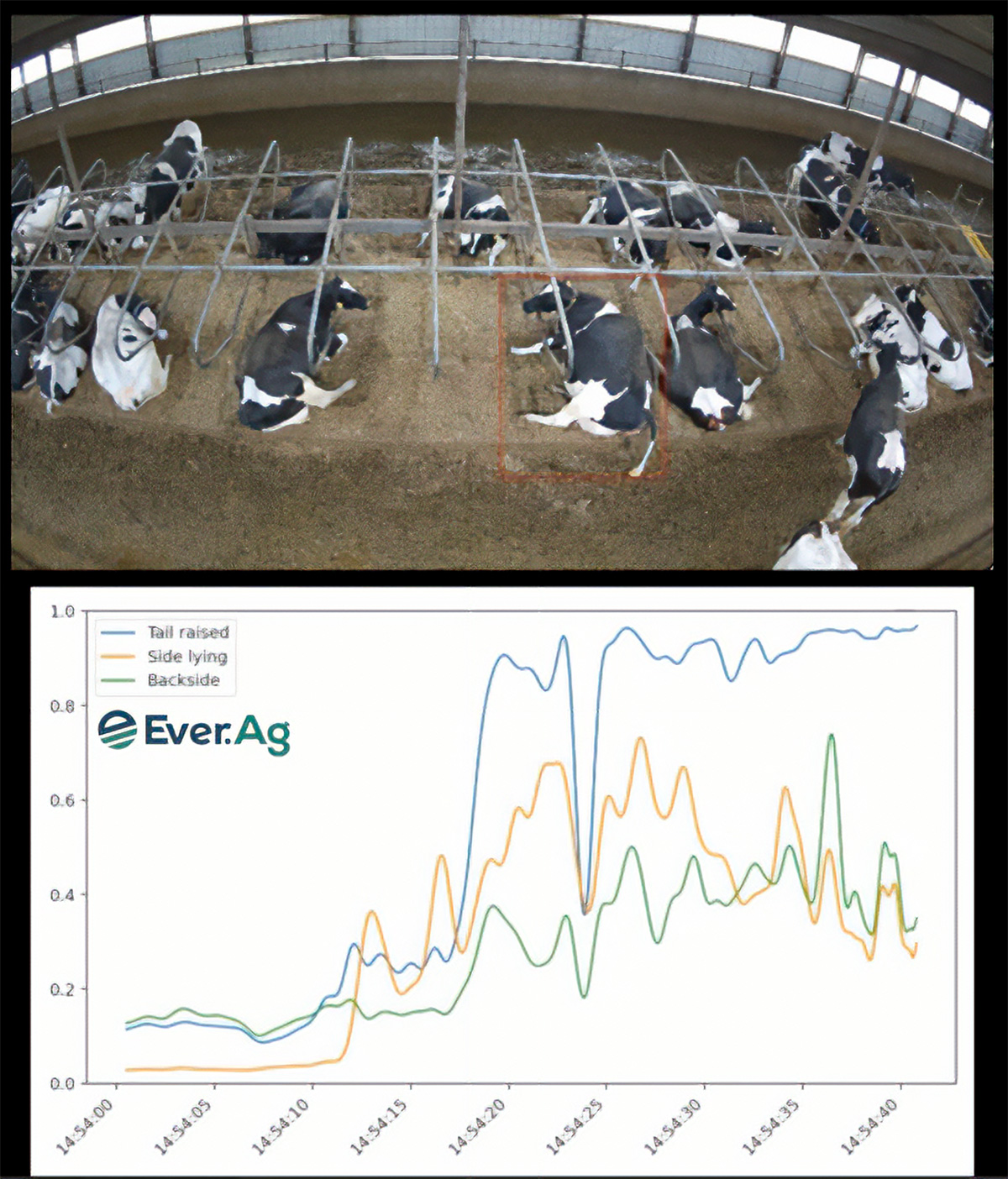
Maternity Warden provides close-up pen monitoring and objective calving identification that sends 24/7 alerts of imminent calving. Photo courtesy of Ever.Ag.
—Progressive Dairy Editor Audrey Schmitz




